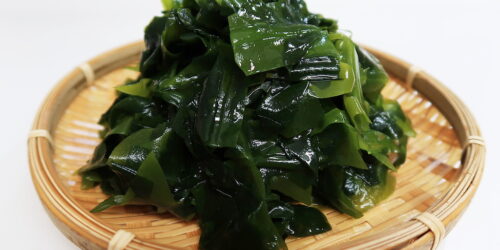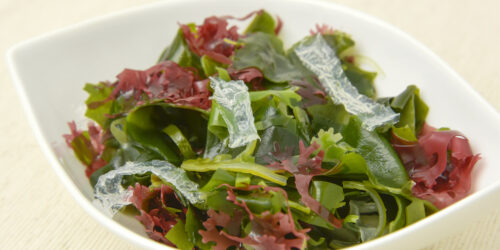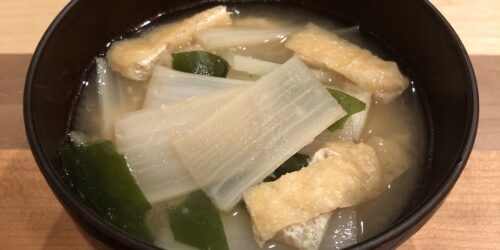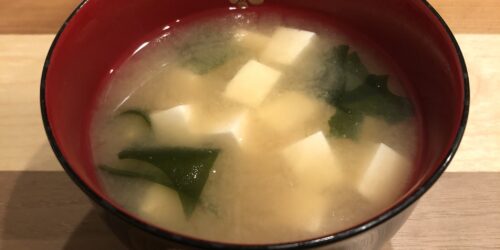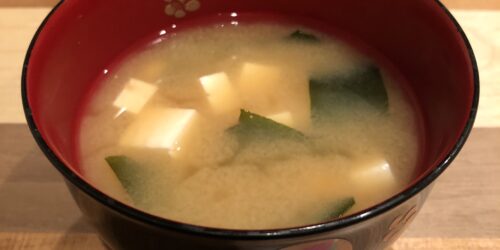7 Types of Wakame and Their Uses
Wakame seaweed is one of the most common seaweed in Japan that often appears on ordinary dining tables such as miso soup and salad.
This is not only nutrient-dense food, but also very scrumptious ingredient that matches well with various dishes.
Have you known that there are various types of wakame seaweed in Japan?
Here, I would like to introduce 7 types of them and their uses!
1. Salted Wakame Seaweed
It’s a traditional way to save wakame seaweed in order to enjoy wakame seaweed all year round.
In this method, seasonal raw wakame seaweed are boiled, and stored with salt.
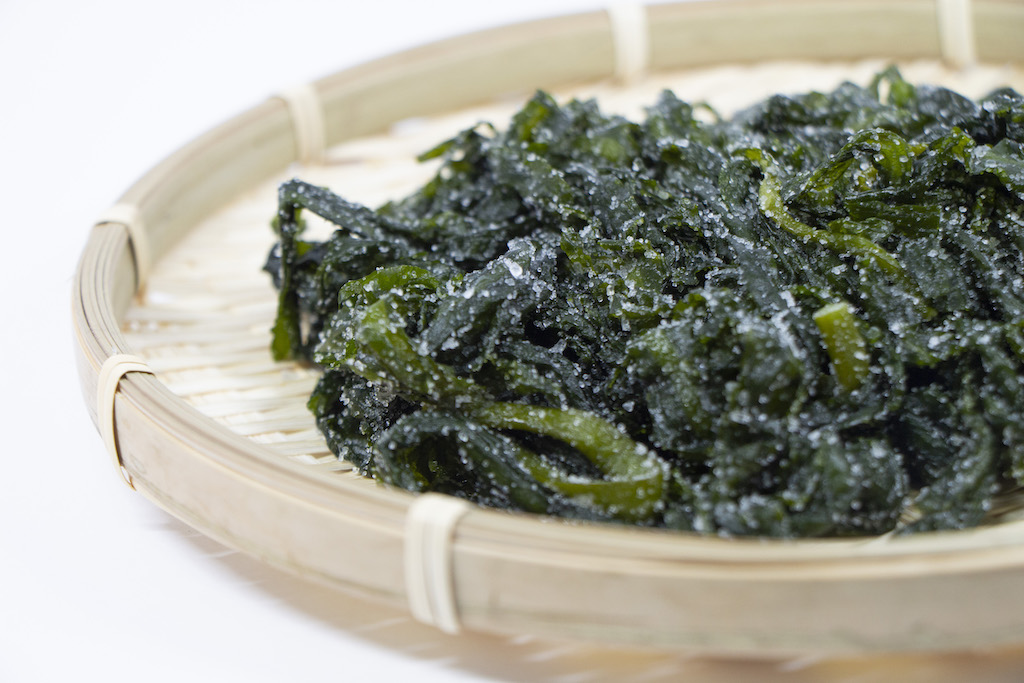
Unlike the dried wakame seaweed, you can enjoy a texture that is extremely near to raw wakame seaweed.
When using for cooking, cut only the amount you use, and rehydrate them in fresh water for about 5 minutes.
The tip for removing salt fully is that you should change the water 2-3 times.
Please note that the amount of wakame seaweed will increase about 3 times.
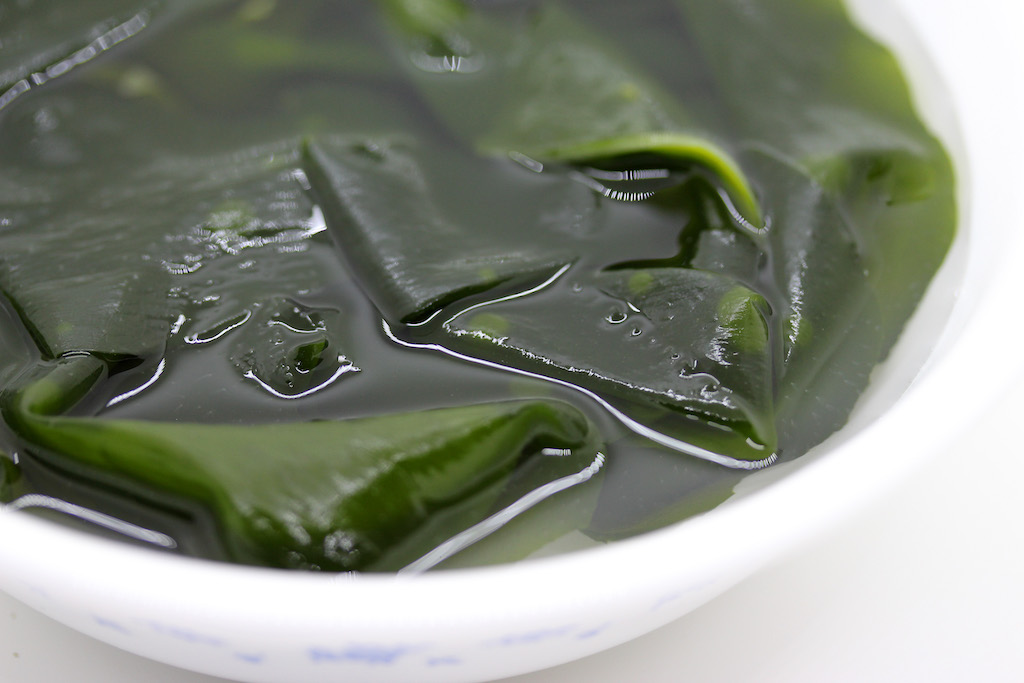
You can put this wakame seaweed in miso soup, salad, and sunomono (food in sweetened vinegar).
Moreover, highly recommended way to eat it is shabu-shabu. It’s one type of hot pot that you dip a slice of pork or beef and some vegetables into the boiled water, and serve yourself with sauce when you think it’s ready.

You can do this with rehydrated salted wakame seaweed instead of meat. In this way, you can enjoy the great texture and smell of wakame seaweed since it’s close to the raw wakame seaweed.
The sauce for shabu-shabu can be anything, but maybe ponzu sauce will be really tasty with wakame seaweed.
2. Dried Wakame Seaweed
Next, I would like to explain some dried wakame seaweed.
There are actually 4 different types of “dried wakame seaweed”.
Their processing methods and raw materials are different. Additionally, each has different nutrients and taste characteristics.
Cut Wakame Seaweed
It’s made by cutting salted wakame seaweed into small pieces, and drying them.
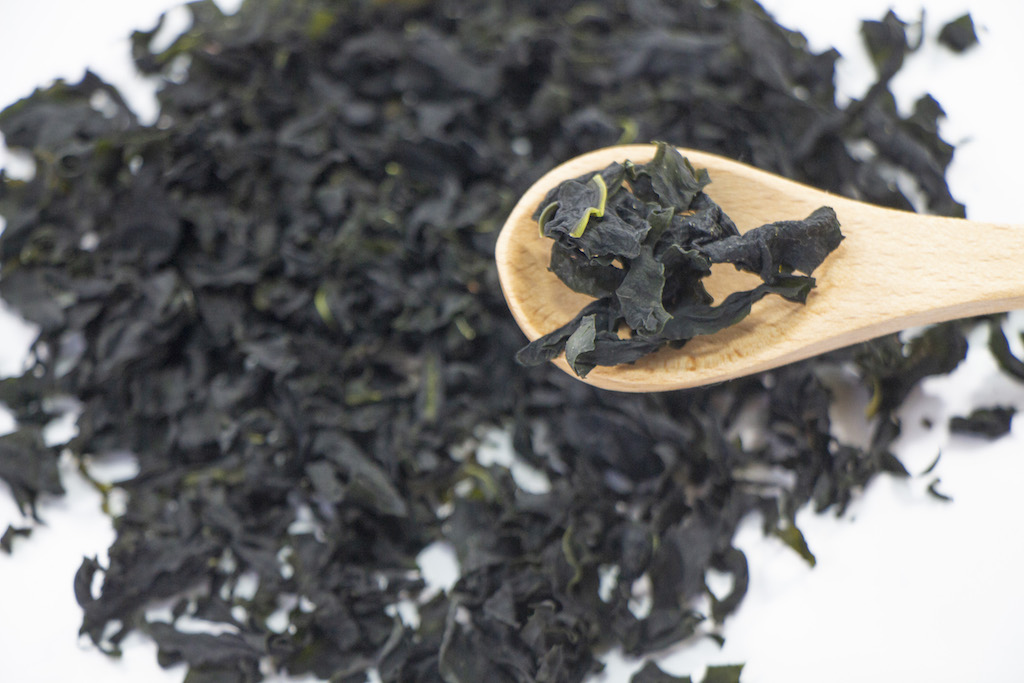
This is a standard wakame seaweed in Japanese households, and extremely useful material. All you need to do is putting the cut wakame seaweed in dishes as it is.
For example, if you put it in a hot miso soup, it’s naturally rehydrated and become one of the ingredient quickly.
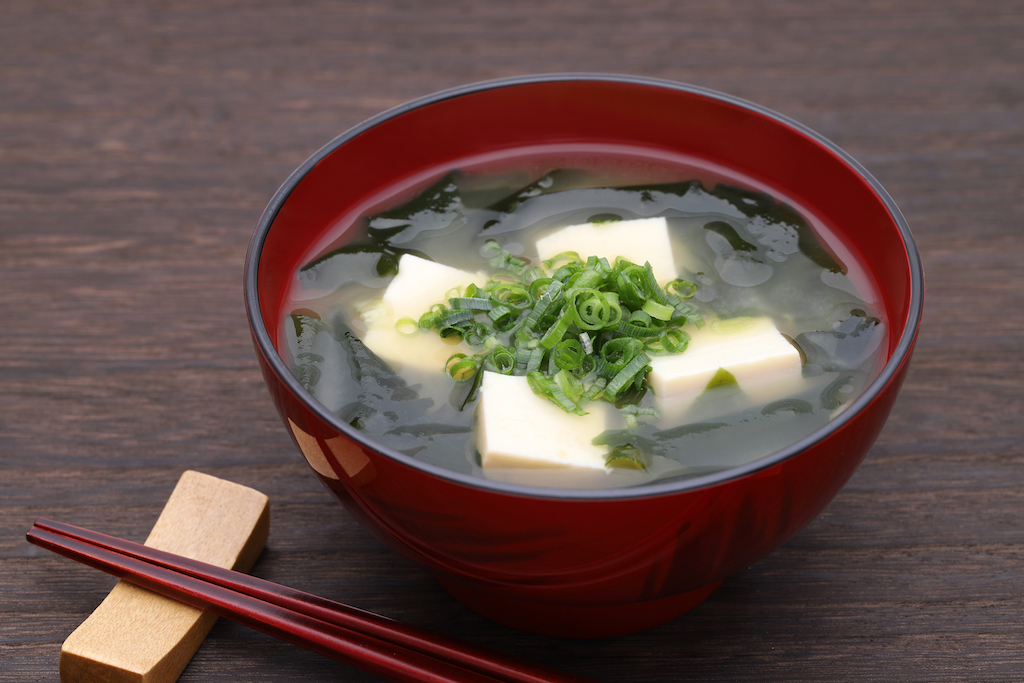
But, if you are a little worried about the smell of seaweed, please rehydrate in hot water and wash with cold water in advance. You can remove the unique smell of seaweed in this way.
In addition, you can use it as an ingredient of a salad or a topping for ramen and udon noodles etc.
Great thing is that it can be stored for a long time and does not take up much space.
Wakame Seaweed Dried in the Shade
It’s hard to explain with the name of it, but it’s totally different from cut wakame seaweed.
This is made by drying raw wakame seaweed as it is. In other words, it’s not salted in the manufacturing process. That is why it contains more nutrients such as dietary fiber and minerals rather than cut wakame seaweed.
When using for cooking, cut them into bite-sized first, and rehydrate them in plenty of water for about 5 minutes.
【2015年新物!】国内産/三陸産/宮城産/岩手産/素干しわかめ150グラム水戻ししてざっとお湯を通せばサラダや酢の物に。水戻ししてぎゅっと水気を切って一煮立ちしたらお味噌汁…https://t.co/aoCGfXaAvG pic.twitter.com/NJsCIqlKoG
— はじける魅力あるます (@ze_wz) February 22, 2016
Ash-dried Wakame Seaweed
This type of dried wakame seaweed is sold with ash on.
In the manufacturing process, plant and wood ash are sprinkled over wakame seaweed. For instance, ash made from ferns, pampas grass, and straw are used. After that, they are sun-dried well.
Compared to (3) dried wakame seaweed, ash-dried one can keep the following factors at room temperature for over a year:
・Bright green color
・Crunchy texture
・Aroma peculiar to wakame seaweed
近所の人のちょっと下頼まれ事をやったら灰干しわかめを貰えた。割の良い仕事であった😌 pic.twitter.com/06BQeBKrFB
— さざなみ楽器工房 / さざなみドラム・クリスタルハープ・ユーフォン (@watagumohuwahuw) January 25, 2020
When using for cooking, wash them with water to remove ash well and drain with paper towel. You can put it in miso soup, sunomono (food in sweetened vinegar) or use it as a topping for sashimi.
Most importantly, you can feel great aroma and crunchy texture peculiar to ash-dried wakame seaweed better when you use it without boiling.
しばらく水につけた灰干しわかめ。何度も水を入れ替えて灰を落とすと、普通の乾燥わかめにはない張りとコシのある質感に。さっと湯通しした時の香りは生のそれを彷彿とさせ、そのくせシャクシャクとした食感が際立ち、実に美しい様相。酢の物ときんぴら和えにするのです。 pic.twitter.com/cd8nmWVDXU
— ちぇり (@CheriTheGlutton) October 31, 2017
Sheet Shaped Wakame Seaweed
This is a local food of San-in region in Japan (Tottori and Shimane prefectures), and not very popular nationwide.
Sheet shaped wakeme seaweed is made by arranging the harvested raw wakame seaweed in a sheet shape and drying well.
It’s not seasoned at all, however it’s very delicious only with the salty taste and umami taste of wakame seaweed itself.
Crispy texture is characteristic of sheet shaped wakeme seaweed, therefore the best way to eat it is to eat it over rice after lightly roasting.
ストーブ等で軽く炙った板ワカメをバリバリと砕いて白飯にかけます
— ひろいぐい太郎 (@hiroiguiTARO) February 6, 2021
ピッと醤油を一垂らし
完成
山陰のソウルフード
板ワカメご飯!
県外の方がこのおいしさを知らないなんて… https://t.co/69gduQkLs1 pic.twitter.com/tyaX6U1EKi
Certainly, you can also put it in miso soup or ramen after rehydrating.
食べないと後悔すると思い限定チョイス!
— 蟹 (@Morganramen) May 17, 2018
板ワカメが良いということは前回の限定で承知してまーす( ̄∇ ̄)
キリッとしたつけ汁に箸が進む
ゴロチャーシューもたっぷりあって大満足!
400gペロリこりゃ500gでもいけたかなと思いました!
美味かったですご馳走様でした♪ pic.twitter.com/cmrw9i1xJW
3. Wakame Seaweed Other Than Leaves
By the way, wakame seaweed that we usually eat is mainly the leaf part. Actually, you can eat some parts of wakame seaweed other than leaves.
I will introduce them next.
Mekabu Wakame Seaweed
This is a detached “mekabu” formed on the stem near the root of wakame seaweed.
It’s sticky (slimy) and often eaten as an ingredient of miso soup or sunomono (food in sweetened vinegar).
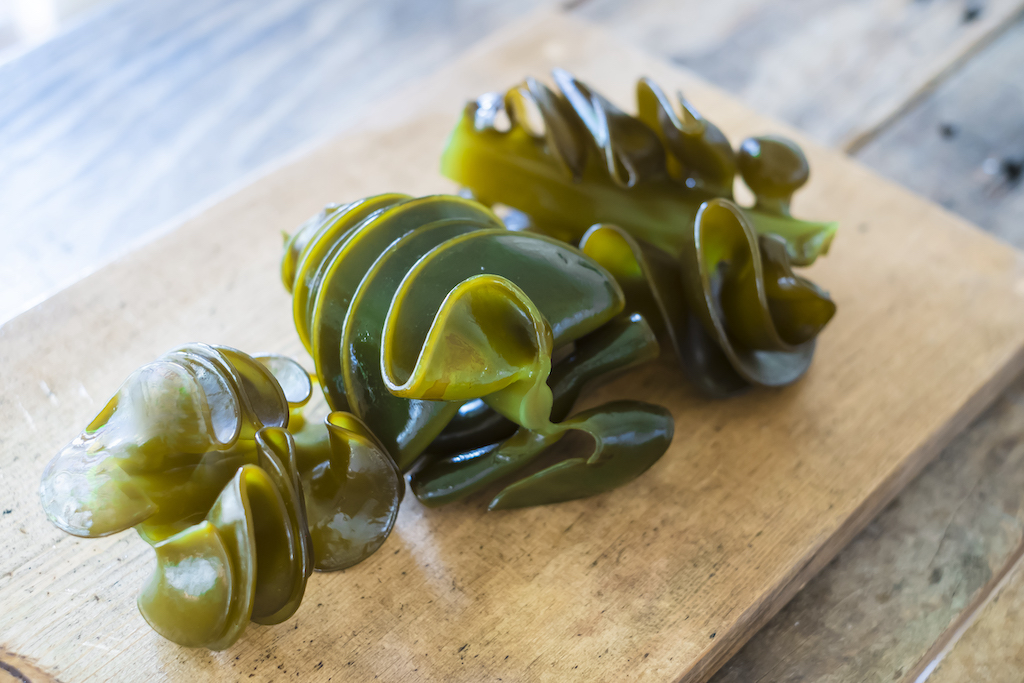
Finely chopped and packed mekabu are often sold at Japanese grocery stores. The popular way to eat it is dipping it in mentsuyu or sauce made with dashi and soy sauce.
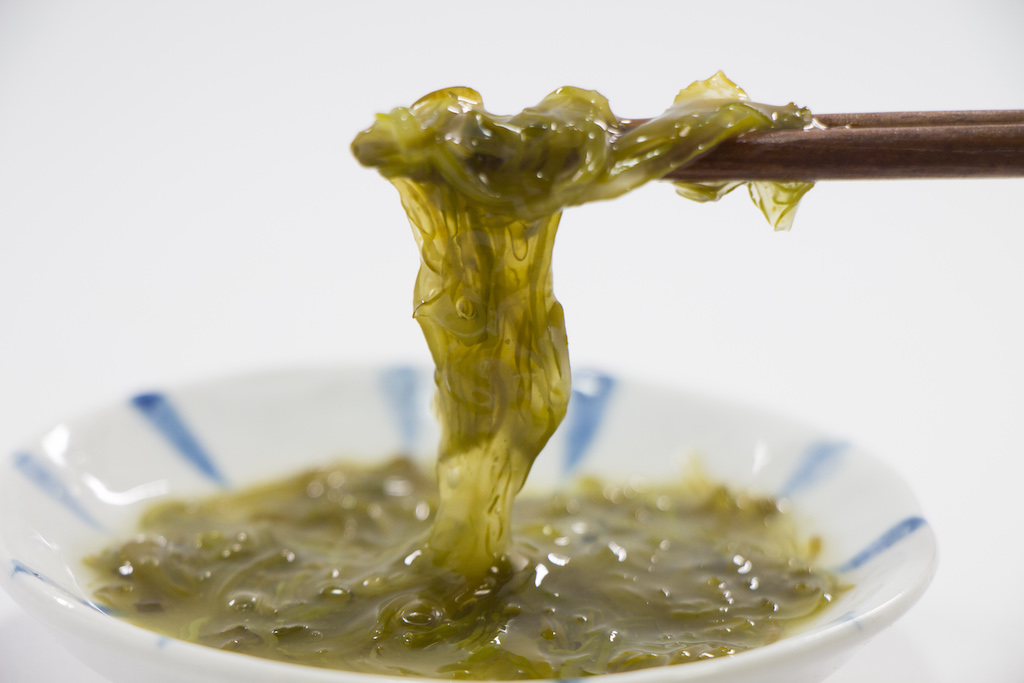
Alginic acid and fucoidan contained in mekabu are exactly the slimy components, and they are dietary fiber. Consequently, it is also attracting attention as a healthy food.
By the way, mekabu is very similar to mozuku which is one type of seaweed. The difference is that mekabu is thicker, more slimy, and has more crunchy texture than mozuku.
What Is Mozuku and How Is It Used?
Both of them are similarly rich in dietary fiber.
Please eat and compare them when you have a chance!
Wakame Stem
This is central rib of the wakame leaf. You can enjoy the chewy and crunchy texture of wakame stem.
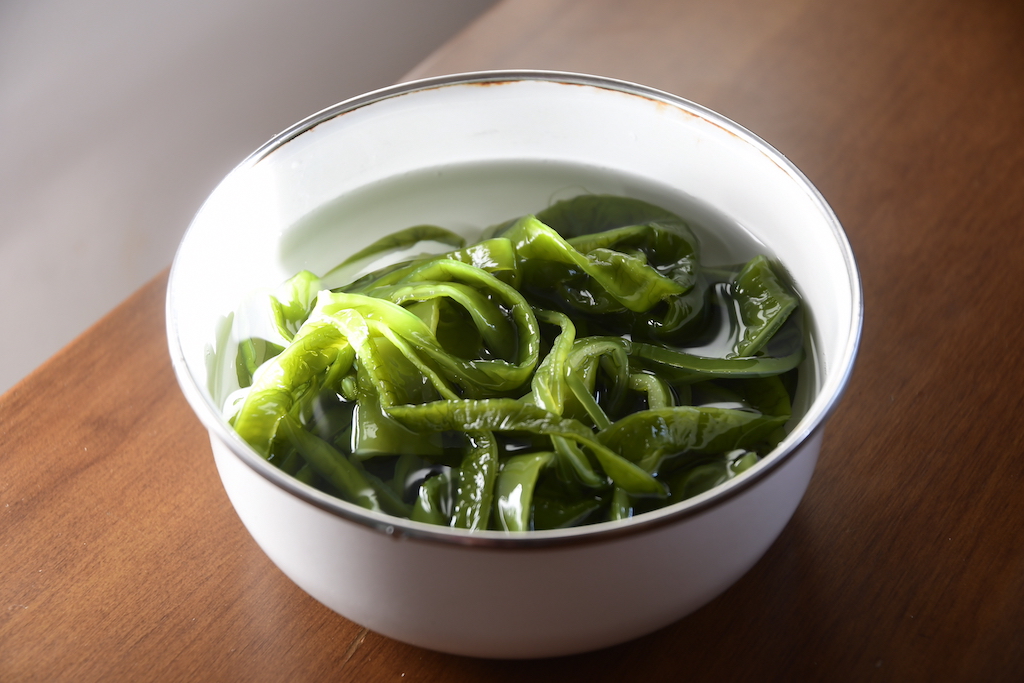
It’s relatively hard than the leaf part, so it’s often processed into simmered dishes and pickles and sold.
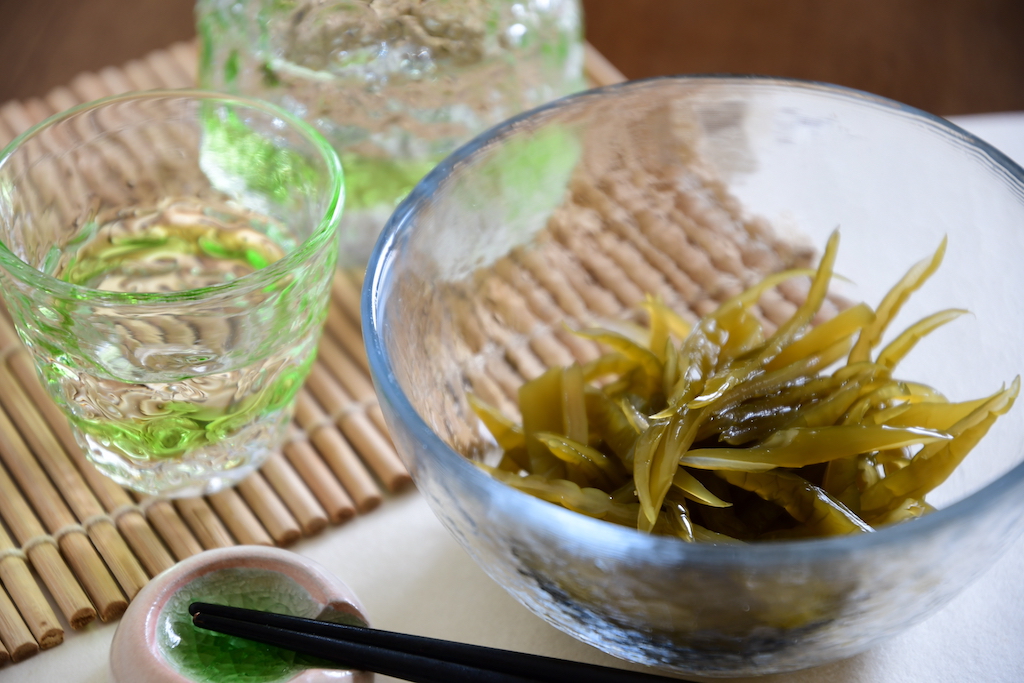
Also, softly simmered wakame stem can be used as a topping for ramen and salad.
まこと家@青物横丁
— 新チトセ (@Chitose_shin) March 4, 2021
チャーシュー麺+茎わかめ+ライス
戸越公園の麺でるに振られてしまったのでこちらに初訪問!
店が見えた瞬間から香る獣臭。美味しいに違いない🙏
他の家系とちょっと違いマイルドなお味でした!そんなにしょっぱくないので次はライスやめて中盛りにしたい。 pic.twitter.com/tvBEfRz82s

